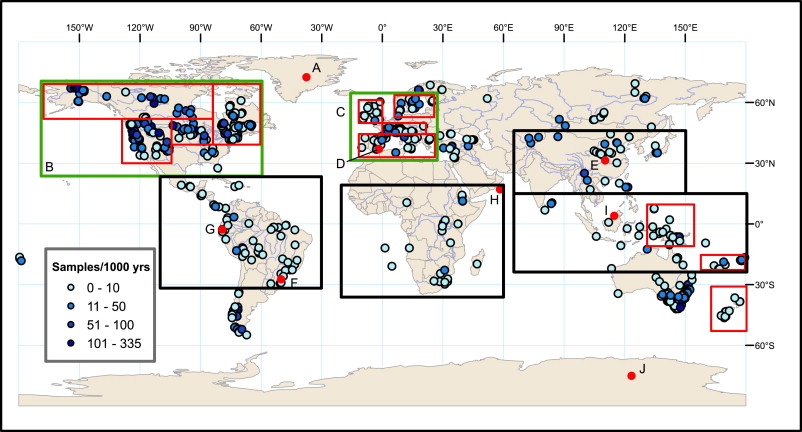We synthesize existing sedimentary charcoal records to reconstruct Holocene fire history at regional, continental and global scales. The reconstructions are compared with the two potential controls of burning at these broad scales – changes in climate and human activities – to assess their relative importance on trends in biomass burning. Here we consider several hypotheses that have been advanced to explain the Holocene record of fire, including climate, human activities and synergies between the two. Our results suggest that 1) episodes of high fire activity were relatively common in the early Holocene and were consistent with climate changes despite low global temperatures and low levels of biomass burning globally; 2) there is little evidence from the paleofire record to support the Early Anthropocene Hypothesis of human modification of the global carbon cycle; 3) there was a nearly-global increase in fire activity from 3 to 2 ka that is difficult to explain with either climate or humans, but the widespread and synchronous nature of the increase suggests at least a partial climate forcing; and 4) burning during the past century generally decreased but was spatially variable; it declined sharply in many areas, but there were also large increases (e.g., Australia and parts of Europe). Our analysis does not exclude an important role for human activities on global biomass burning during the Holocene, but instead provides evidence for a pervasive influence of climate across multiple spatial and temporal scales.

